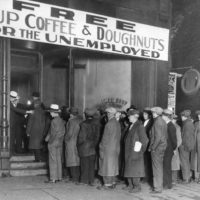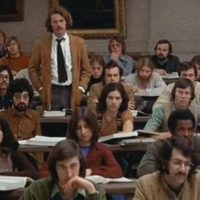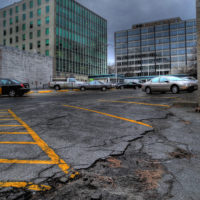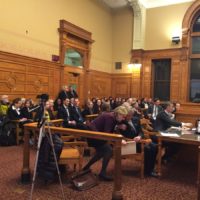New York City has announced a new (well, sort of) arts program. Hyperallergic reports: The City of New York will put some artists to work this summer with a $25 million program inspired by the New Deal’s Works Progress Administration (WPA). Announced yesterday, May 6, the recovery program will pay hundreds of local artists to beautify and activate public spaces across the city with murals, public artworks, performances, and more.The new program, called City Artist Corps, is expected to create jobs for more than 1,500 artists in NYC, a … [Read more...]
It’s Friday, Ask Me Anything
The amazing students in our Arts Administration program at the O'Neill School at Indiana University have requested an ask-me-anything day, and so here it is. Through the day you can continue to ask questions either in the comments section here, or on Twitter, and I'll do my best. 2:30 pm What is the most valuable lesson you've learned as a parent? I'll give a list: Be as good as you can, know you will never be perfect; let children explore; recognize when you have done wrong, apologize for it, but don't dwell on it, look forward and be … [Read more...]
Strategic Planning and Muddling Through
Out in the woods for today's video, on Charles Lindblom's classic essay "The science of 'muddling through'". When an arts organization sets out to form a strategic plan, what exactly is it doing? Is a so-called 'logic model', that carefully sets out desired outcomes, and then works backwards through the most effective outputs and actions, the way we actually conceive of the problem? Or in fact is what we do in practice much more modest, taking existing activities as more-or-less given, and looking to a few changes at the margin that ought to be … [Read more...]
The wealth tax and the museum
At Bloomberg, Tyler Cowen has a short post on some unintended consequences of a wealth tax. It's an idea being talked about in the Democratic candidate debates. In the US we do have a few wealth taxes already: local property taxes, and, for the very, very wealthy, estate taxes. But a stand-alone wealth tax would be something new. Cowen has an unusual take. When the estate tax comes up for debate, whether to increase its rate and lower its threshold, or, on the other side, to eliminate it entirely, one of the issues that comes up is the … [Read more...]
Identification, please
What are the keys to success in the art world? Some combination of hard work, smart early career choices, artistic talent, access to the connected and the gate-keepers, and a bit of serendipity. The same could be said of many professions. But it's very hard to discern the relative importance of these ingredients. Research finds that those who have attained the greatest successes in creative fields tend to be more likely to think that merit is what got them there (in this they are not much different from the successful in other arenas), while … [Read more...]
What the doctor ordered
Doctors will be able to prescribe visits to the Montreal Museum of Fine Art for their patients, reports the Gazette: Doctors will each be able to assign up to 50 museum prescriptions over the course of the pilot project. Each prescription will allow entry for up to two adults and two children age 17 or under. “There’s more and more scientific proof that art therapy is good for your physical health,” said Dr. Hélène Boyer, vice-president of Médecins francophones du Canada and the head of the family medicine group at the CLSC … [Read more...]
Back to school – a cultural planning syllabus
So after a stretch in university administration, I am back full-time in the classroom this fall. One of my classes is in Cultural Planning and Community Development - i.e. "place-based" cultural policy - and though I've taught bits and pieces of the subject here and there, have never had the course actually assigned to me until now. So, this is what I've put together. It's a lot of reading, with some preliminaries on what's going on in the economy right now (since I don't think anyone can do "placemaking" policy without a good understanding … [Read more...]
Let’s move before they change the parking rate
No, I cannot quit writing about economic-impact-of-the-arts reports. Let's try something a little more focused, and talk about ... parking. Parking is part of the cost of attending a show, if it takes place in an area without free parking and you don't live nearby. Economists think charging for parking is ok because your car is taking up scarce space that has to be allocated somehow. Free parking means space is allocated on a first-come-first-serve basis, which is not all that efficient (people have to arrive much earlier for events than … [Read more...]
Is there an ethical case against deaccessioning by museums? Updated
In response to a post by artsjournal.com blog neighbor Lee Rosenbaum on proposed sales of works by the Berkshire Museum and the Lasalle University Art Museum, I asked via Twitter whether there was a coherent case to be made that deaccessioning is unethical, and not simply (sometimes) a case of bad management and oversight, or indeed sometimes simply a rational and defensible adjustment to changes in circumstances and/or mission. Ms. Rosenbaum replied to me on Twitter saying "deaccessioning is not unethical. Certain kinds of deaccessioning are … [Read more...]
Dream academy
What happened to the genre of academic satire? In the Chronicle Review, Andrew Kay has some ideas; I'd like to offer a different take. Disclaimer: I'm no literary critic. But (a) I am an academic, and (b) I've read all of the novels he cites, suggesting that yes, I'm something of a fan. He takes us through the common list - from the UK, Kingsley Amis' Lucky Jim, and various novels by David Lodge (he doesn't single it out, but Nice Work has always been my favourite of his), and from the US Jane Smiley's Moo, Richard Russo's Straight Man, … [Read more...]










